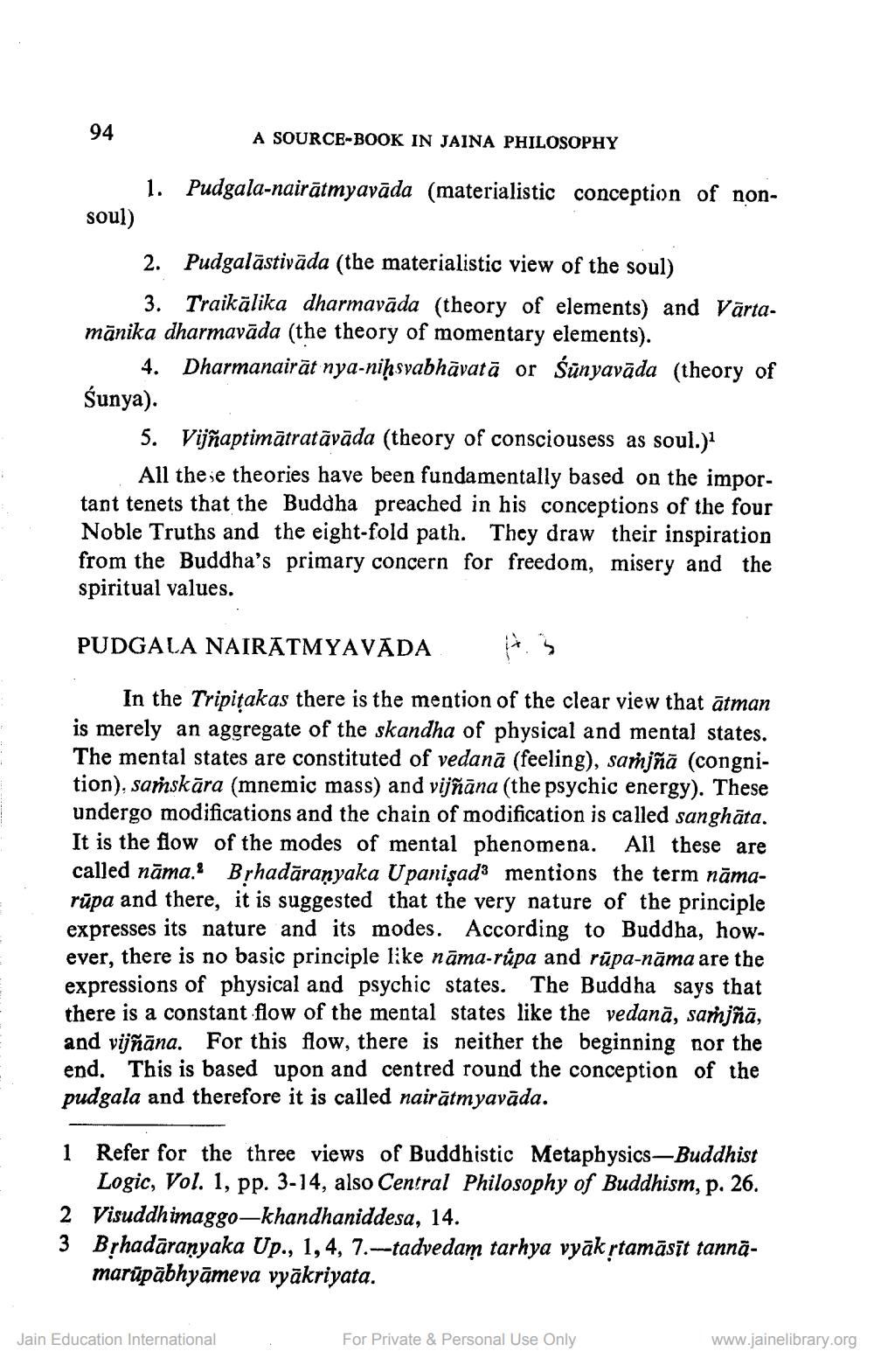________________
94
A SOURCE-BOOK IN JAINA PHILOSOPHY
1. Pudgala-nairātmyavāda (materialistic conception of non
soul)
2. Pudgalāstivada (the materialistic view of the soul)
3. Traikälika dharmavāda (theory of elements) and Vartamānika dharmavāda (the theory of momentary elements).
4. Dharmanairat nya-niḥsvabhāvatā or Sunyavāda (theory of Śunya).
5. Vijnaptimātratāvāda (theory of consciousess as soul.)1
All these theories have been fundamentally based on the important tenets that the Buddha preached in his conceptions of the four Noble Truths and the eight-fold path. They draw their inspiration from the Buddha's primary concern for freedom, misery and the spiritual values.
PUDGALA NAIRATMYAVADA
A.
In the Tripitakas there is the mention of the clear view that ātman is merely an aggregate of the skandha of physical and mental states. The mental states are constituted of vedana (feeling), saṁjñā (congnition), samskāra (mnemic mass) and vijñāna (the psychic energy). These undergo modifications and the chain of modification is called sanghāta. It is the flow of the modes of mental phenomena. All these are called nāma. Bṛhadaranyaka Upanisad3 mentions the term namarūpa and there, it is suggested that the very nature of the principle expresses its nature and its modes. According to Buddha, however, there is no basic principle like nama-rupa and rūpa-nāma are the expressions of physical and psychic states. The Buddha says that there is a constant flow of the mental states like the vedanā, saṁjñā, and vijñāna. For this flow, there is neither the beginning nor the end. This is based upon and centred round the conception of the pudgala and therefore it is called nairatmyavāda.
1 Refer for the three views of Buddhistic Metaphysics-Buddhist Logic, Vol. 1, pp. 3-14, also Central Philosophy of Buddhism, p. 26. 2 Visuddhimaggo-khandhaniddesa, 14.
3 Bṛhadaranyaka Up., 1, 4, 7.-tadvedam tarhya vyāk ṛtamāsīt tannāmarūpābhyāmeva vyākriyata.
Jain Education International
For Private & Personal Use Only
www.jainelibrary.org




